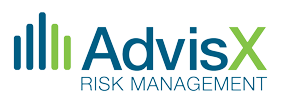Why Conduct a Fair Lending Model Validation?
 Your Fair Lending model, like your AML system, draws from a well of data supplied from another source. That data is then run through a series of algorithms and comparative file data to help you both understand the data, and to identify any aspects that might need additional investigation. Anyone who is familiar with data analytics knows that the methods, principles, and algorithms are subject to potential manipulation that can vary outcomes. It all depends on the settings and interpretations of the analytical methods. Just like AML systems, your Fair Lending model needs validation to ensure that you aren’t exposing yourself to unnecessary and dangerous risks.
Your Fair Lending model, like your AML system, draws from a well of data supplied from another source. That data is then run through a series of algorithms and comparative file data to help you both understand the data, and to identify any aspects that might need additional investigation. Anyone who is familiar with data analytics knows that the methods, principles, and algorithms are subject to potential manipulation that can vary outcomes. It all depends on the settings and interpretations of the analytical methods. Just like AML systems, your Fair Lending model needs validation to ensure that you aren’t exposing yourself to unnecessary and dangerous risks.
How AdvisX Can Help
Let us help put your Fair Lending program on solid footing. We know where the pitfalls are. We coordinate closely with you to minimize disruption to your team as well as the costs through each phase of the process. With AdvisX on your team, you’ll find:
- Expertise combined with our patented technology platform resulting in fees that are 40% below those charged by traditional providers
- A team with the expertise to know the kinds of things that can derail an Fair Lending model validation and make it unnecessarily time-consuming and expensive
- The opportunity to work directly with a team that national and regional firms contract with to conduct Fair Lending validation projects for their clients, saving you money
- A 100% satisfaction rate from our client base
Phase I: Discovery
During the discovery phase, we work closely with your team and your data to gain an understanding of your institution and the Fair Lending model you have in place. We work to know your risk factors and how the Fair Lending model operates with those risks in the normal course of operations.
Phase II: Proving the Model
During this phase, we seek to prove that the model as currently designed is functioning accurately and effectively. This process includes the following:
- Review the output from the model and evaluate it back to the source information based on the known algorithms
- Take the source information used by the model and evaluate whether the model has properly tasked that information
- Evaluate the model for system effectiveness
- Use an independent set of algorithms against the data to compare the results of the model’s output on decisioning and pricing aspects
- Utilize an independent system to validate the system’s accuracy and to independently determine files for review.
Phase III: Risk Alignment
Here we assess whether the current model is in line with your financial institution’s fair lending risk appetite. This phase, while optional, can help your institution reduce its fair lending workloads, anxieties and costs.
Contact us for a no-obligation proposal by emailing us at info@advisx.com, by calling 1-888-980-1949, or completing the form below.
'Fair Lending Services' is only available to registered users.
